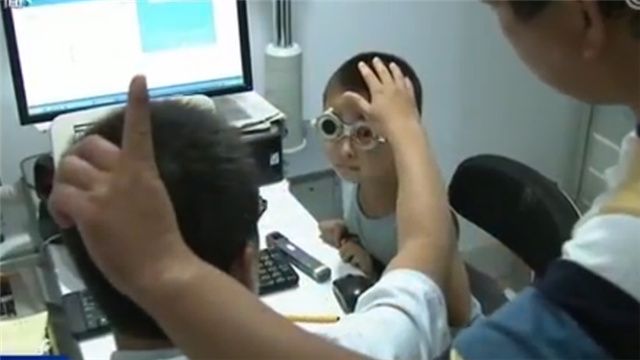Cctv newsTomorrow (6th) is the 23rd National Eye Love Day. The National Health and Wellness Commission held a special press conference yesterday (4th) morning to introduce the prevention and treatment of eye diseases among children and adolescents in China. In recent years, the myopia problem of children and adolescents in China has become increasingly serious and the trend of younger age is obvious, which has become a major social and public health problem.

It is understood that the data show that the myopia rate of primary school students in China is 45.7%, that of junior high school students is 74.4%, that of senior high school students is 83.3%, and that of college students is as high as 87.7%. The problem of myopia in children is more serious in economically developed areas, and the two stages of "small rise to the beginning" and "initial rise" are the key periods for the rapid increase of the incidence of ametropia. In addition to congenital factors, the high incidence of myopia is mainly caused by bad habits of daily use of eyes. For example, insufficient outdoor activities, premature and massive use of electronic products, etc. Since 2016, China has carried out monitoring of common diseases and health risk factors of students in some cities, focusing on strengthening the monitoring of students’ eyesight at different ages. This year, the scope of monitoring will be expanded and special investigations will be carried out to provide a basis for proposing effective intervention measures. The "Thirteenth Five-Year" National Eye Health Plan proposes to carry out screening and scientific correction of ametropia in children and adolescents, so as to reduce the visual damage caused by uncorrected ametropia. In addition, through decades of continuous efforts, trachoma and other major blinding eye diseases in China have been effectively curbed.
Guidelines for prevention and treatment of myopia, strabismus and amblyopia released
Yesterday (4th), National Health Commission issued the Guidelines for Prevention and Treatment of Myopia, Diagnosis and Treatment of Amblyopia and Diagnosis and Treatment of Strabismus to guide medical institutions and ophthalmologists to improve their service capabilities, and to guide students and parents to establish a correct awareness of using their eyes.
Experts pointed out that the most important factor causing myopia is the close load of the eyes. Work, reading and playing games are the main causes of myopia. In addition, a large number of recent scientific studies show that outdoor activities are effective measures to prevent and control myopia, and the time of outdoor activities is negatively correlated with the incidence and progress of myopia. The latest research results show that the use of low-concentration atropine eye drops can relieve myopia, which has been used in Singapore, Taiwan Province and other regions, and China is under review and will soon be listed in the mainland.

Wang Ningli, head of the national technical guidance group for preventing blindness.
Wang Ningli, head of the national technical guidance group for preventing blindness.We advocate outdoor activities from preschool and kindergarten. Where conditions permit, it is best to encourage outdoor activities for two hours. If not, you can’t do it for less than one hour, and emphasize effective outdoor activities.
Amblyopia is a common eye disease among children in China, and the prevalence rate is about 3.5% between the ages of 6 and 14. The guidelines for the diagnosis and treatment of amblyopia point out that the normal visual acuity of children aged 3 to 5 is 0.5, and that of children over 6 years old is 0.7. Children’s visual acuity can only reach 1.0 after 7 years old, and children under 7 years old can’t be required to take 1.0 visual acuity, otherwise amblyopia will tend to be overtreated. Strabismus is associated with amblyopia, and children with strabismus will also have amblyopia. If amblyopia is not well controlled by one eye, strabismus will also occur. Strabismus not only affects aesthetics, but also affects binocular visual function. The guidelines for the diagnosis and treatment of amblyopia and strabismus clearly stipulate the specific diagnosis and treatment methods.